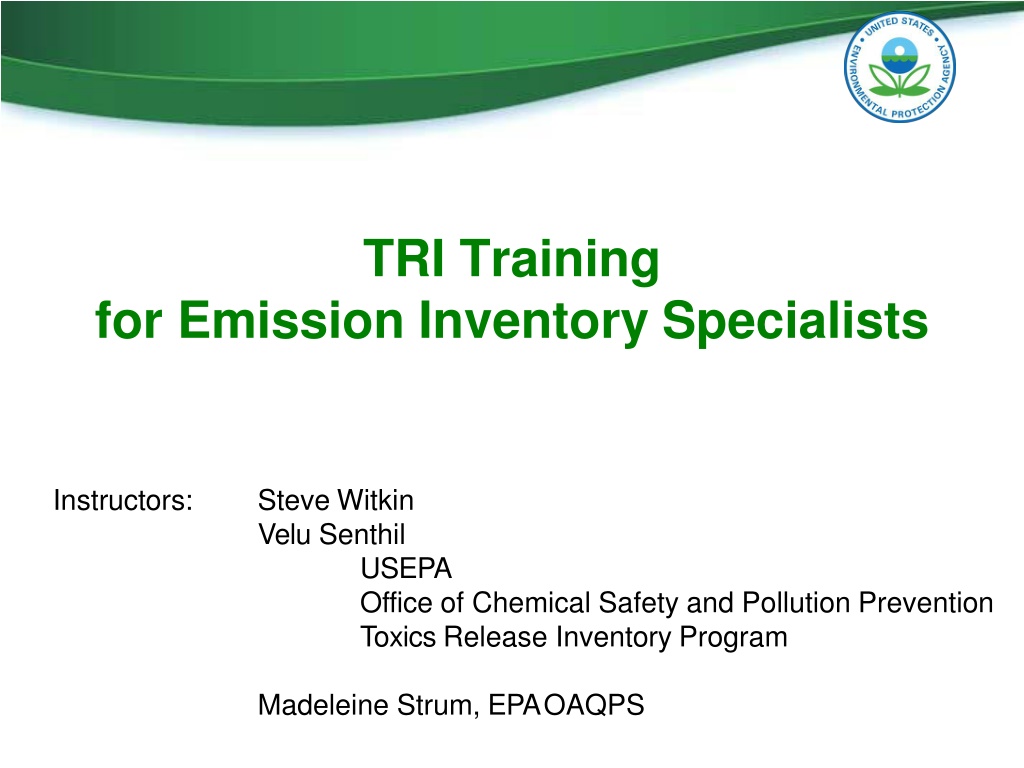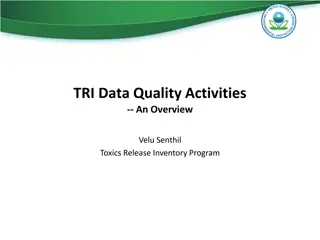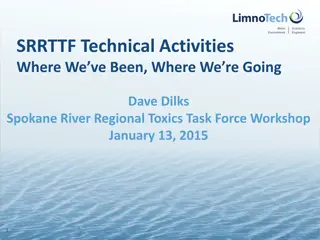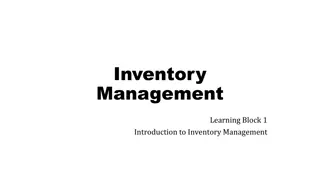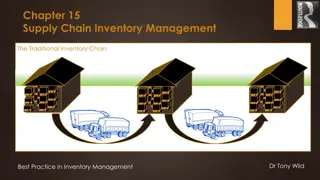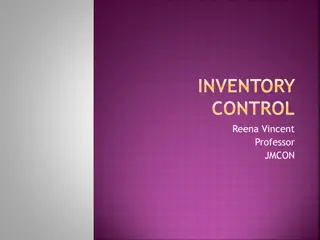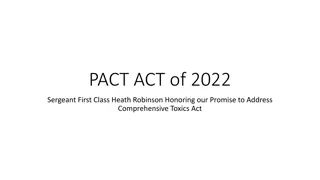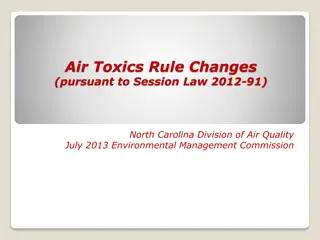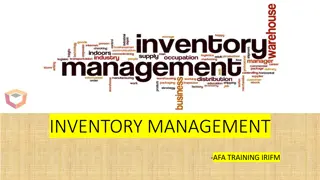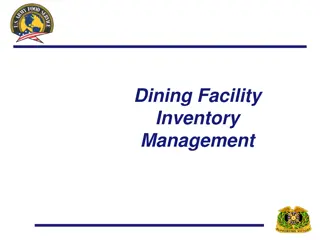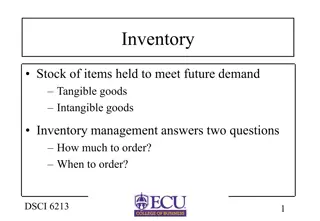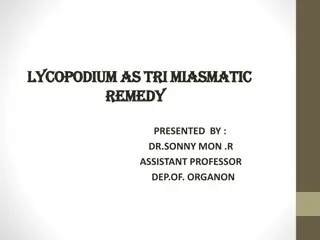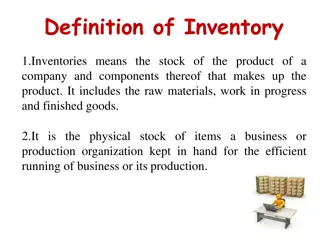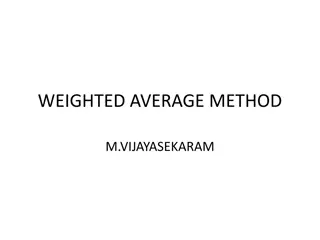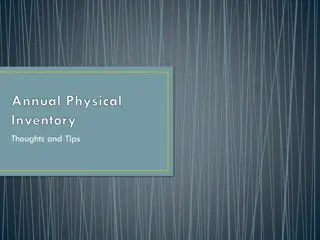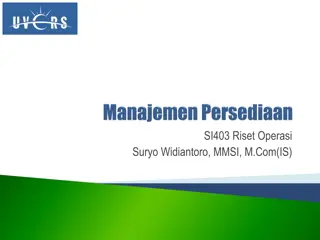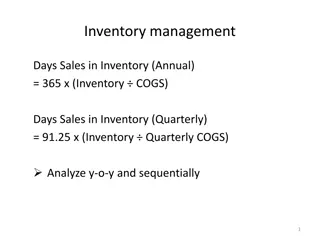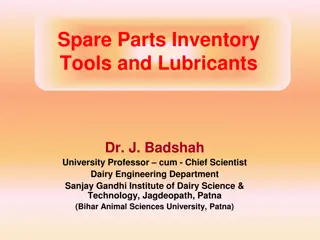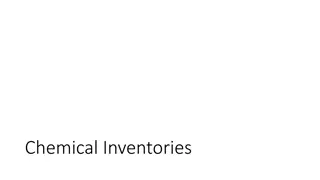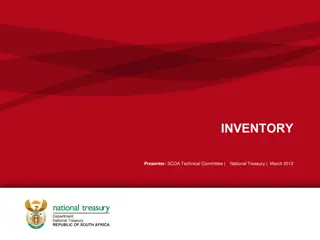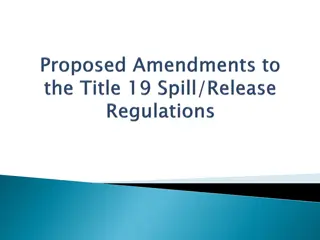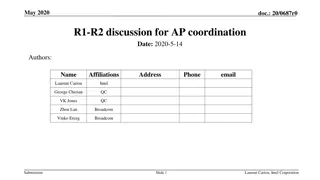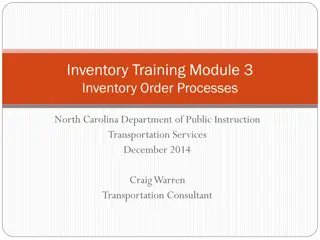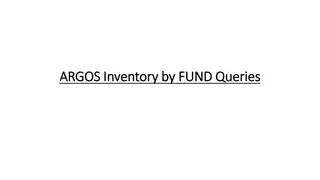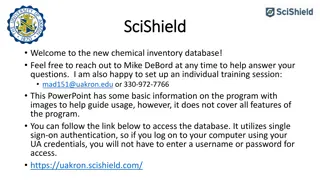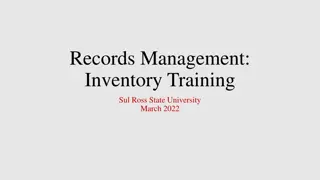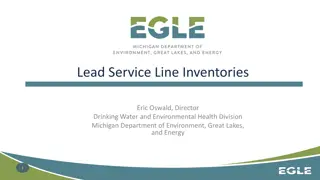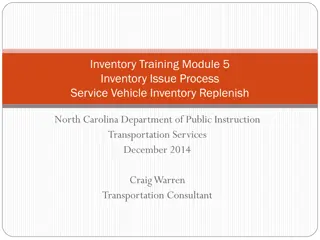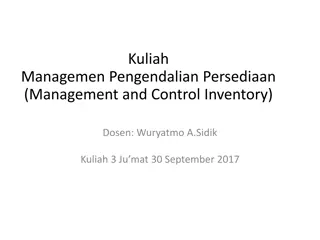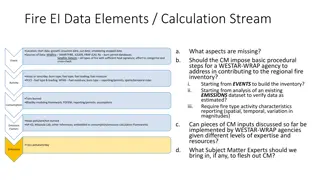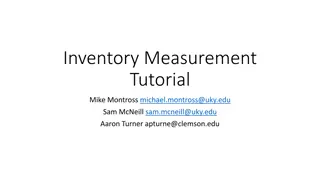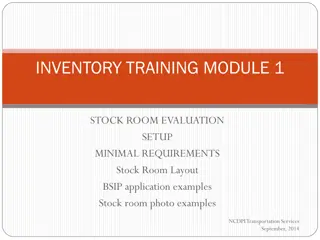Understanding Toxics Release Inventory (TRI) Program
Toxics Release Inventory (TRI) program is a reporting system that tracks the waste management of toxic chemicals posing threats to human health and the environment. It was created in response to tragic incidents like the Bhopal disaster, aiming to provide information on toxic releases from industrial facilities. TRI includes data on waste transfers, pollution prevention, releases, recycling, and more. Learn about releases of toxic chemicals into air, water, and land, and which facilities must report to TRI.
Download Presentation

Please find below an Image/Link to download the presentation.
The content on the website is provided AS IS for your information and personal use only. It may not be sold, licensed, or shared on other websites without obtaining consent from the author. Download presentation by click this link. If you encounter any issues during the download, it is possible that the publisher has removed the file from their server.
E N D
Presentation Transcript
TRI Training for Emission Inventory Specialists Instructors: Steve Witkin Velu Senthil USEPA Office of Chemical Safety and Pollution Prevention Toxics Release Inventory Program Madeleine Strum, EPAOAQPS
Agenda for Today TRI Training TRI Overview TRI 101 enhanced with implied and unstated information Data Quality Combined Air Emissions Reporting (CAER) for TRI / NEI / SLT Break Data Access Overview Data Access Examples Q & A Slides with gold star and bar contain supplemental information 3 5/17/2018 U.S. Environmental ProtectionAgency
Why was the Toxics Release Inventory created? Bhopal, India December 1984 Methyl isocyanate gas released at a Union Carbide chemical plant Thousands died the first night Thousands more have died due to long-term health effects Survivors continue to suffer with permanent disabilities Institute, West Virginia August 1985 Chemical release at a similar facility in the U.S. Over 100 people hospitalized Bhopal memorial forthose killed and disabled by the 1984 toxic gas release Increased concern in the U.S. about chemical accident preparedness and availability of information on toxic chemical releases from industrial facilities 5/17/2018 U.S. Environmental ProtectionAgency 4
What is the Toxics Release Inventory (TRI)? Reporting program tracking the waste management of certain toxic chemicals that pose a threat to human health and the environment. Facilities to States / Tribes and to EPA TRI includes information on: And much more! Waste transfers Pollution prevention Releases Recycling 5/17/2018 U.S. Environmental ProtectionAgency 5
What is a release? A "release" refers to different ways that toxic chemicals from industrial facilities enter the: Air Water Land The likelihood of residents coming into contact with toxic chemicals depends on the type of release and otherfactors For more information, see Factors to Consider When Using TRI Data at: https://www.epa.gov/toxics-release-inventory-tri-program/factors- consider-when-using-toxics-release-inventory-data 5/17/2018 U.S. Environmental ProtectionAgency 6
Which facilities must report to TRI? 1. Facility must be in a TRI-covered industry sector or category, including: Coal/Oil electricity generation Hazardous Waste Management Manufacturing CertainMining Facilities Federal Facilities 2.Facility must have the equivalent of at least 10 full-time employees 3.Facility must manufacture, process or use more than a certain amount of a TRI toxic chemical per year 5/17/2018 U.S. Environmental ProtectionAgency 7
TRI-covered industries Identified by NAICS 212 Mining 221 Utilities 31 - 33 Manufacturing All Other Miscellaneous Manufacturing (includes 1119, 1131, 2111, 4883, 5417, 8114) 424 Merchant Wholesalers, Non-durable Goods 425 Wholesale Electronic Markets and Agents Brokers 511, 512, 519 Publishing 562 Hazardous Waste Federal Facilities Exceptions / conditions exist across all industries ! Full list available from most secondary web pages off of www.epa.gov/tri, in left hand side bar is a link to Covered Industries 5/17/2018 U.S. Environmental ProtectionAgency 8
Industries NOT covered Under TRI Partial list of industries who do not report to TRI Oil & Gas Extraction (NAICS 211xxx) Other Services (NAICS 81xxxx) example - Dry Cleaner 812320 Retail Trades (NAICS 44xxxx) example - Gas Stations 447190 Most Wholesale Trades (NAICS 42xxxx) except Chemical 424690 Bulk Petroleum Stations and Terminals 424710 Transportation (NAICS 48xxxx) Airports Rail Marine (w/1 niche exception) 5/17/2018 U.S. Environmental ProtectionAgency 9
Good to Know The facility s NAICS are based on the facility s primary economic activities, which can change from year to year. Example Soy bean production and Biofuel production TRI now follows the Census updates cycle of 5 years. Awkward situation where the same facility performing the same operations may report under a different NAICS. (typically only at the 6 digit level) TRI facility attributes (including NAICS and Name) are based on the most recent TRI submission from the facility. 2/1/2018 U.S. Environmental ProtectionAgency 11
Ten full-time employees equivalents 20,000 Total employments hours per year Includes paid holidays, vacations and sick leave Includes full time, part time and contract staff 5/17/2018 U.S. Environmental ProtectionAgency 11
TRI Listed Chemical 692 Chemicals and chemical categories 595 individually-listed chemicals and 32 chemical categories Five categories containing 70 specifically-listed chemicals). 13 chemical / chemical categories have qualifiers Full list available from most secondary web pages off of www.epa.gov/tri, in left hand side 5/17/2018 U.S. Environmental ProtectionAgency 12
Chemical / chemical categories with qualifiers Qualifiers based on form Aluminum Aluminum oxide Ammonia Asbestos Hydrochloric acid Nitrate compounds Phosphorus Sulfuric acid Vanadium Zinc Qualifiers based on activity Dioxin and dioxin-like compounds Isopropyl alcohol Saccharin 7429-90-5 1344-28-1 7664-41-7 1332-21-4 7647-01-0 NA 7723-14-0 7664-93-9 7440-62-2 7440-66-6 67-63-0 81-07-2 5/17/2018 U.S. Environmental ProtectionAgency 13
Chemical Groups Most are not part of TRI reporting regulations Groups created to support user needs PBT (includes 21 chemical or chemical compound) OSHA Carcinogens HAP Metal and metal Compounds CERCLA Hazardous Substances 5/17/2018 U.S. Environmental ProtectionAgency 14
Persistent Bioaccumulative, and Toxic (PBT) Chemical Group ALDRIN BENZO(G,H,I)PERYLENE CHLORDANE DIOXIN AND DIOXIN-LIKECOMPOUNDS HEPTACHLOR HEXACHLOROBENZENE ISODRIN LEAD LEAD COMPOUNDS MERCURY MERCURY COMPOUNDS METHOXYCHLOR OCTACHLOROSTYRENE PENDIMETHALIN PENTACHLOROBENZENE POLYCHLORINATED BIPHENYLS POLYCYCLIC AROMATIC COMPOUNDS TETRABROMOBISPHENOL A TOXAPHENE TRIFLURALIN HEXABROMOCYCLODODECANE (HBCD) Category-Added starting with reporting year 2017 5/17/2018 U.S. Environmental ProtectionAgency 15
Chemical Activity Threshold (This determines if facility must report. It is unrelated to quantities which must be reported) For toxic chemicals that are NOT PBT chemicals the threshold amounts are: 25,000 pounds for manufactureor 25,000 pounds for processor 10,000 pounds for otherwise use PBT thresholds do not vary by activity, but do vary by specific chemical 100 lbs, 10 lbs, 0.1 grams (Dioxins) 5/17/2018 U.S. Environmental ProtectionAgency 16
What information do facilities report to TRI? On-site releases of TRI chemicals to: Air Water Land Transfers of chemical waste to off-site locations Other waste management: Recycling Treatment Energy Recovery Pollution prevention activities (www.epa.gov/tri/p2) 5/17/2018 U.S. Environmental ProtectionAgency 17
What information do facilities report to TRI? Cont d Quantity of release Available in all tools Media released to - Available in all tools Method of Estimation only available in EZ or Customized queries, or from reporting forms (available in most tools) Method of Treatment only available in EZ or Customized queries, or from reporting forms (available in most tools) 5/17/2018 U.S. Environmental ProtectionAgency 18
What information do facilities report to TRI? cont d Readily Available - Per Statute 42 U.S.C., Chapter 16, Section 11023 (g)(2) Use of available data In order to provide the information required under this section, the owner or operator of a facility may use readily available data (including monitoring data) collected pursuant to other provisions of law, or, where such data are not readily available, reasonable estimates of the amounts involved. Nothing in this section requires the monitoring or measurement of the quantities, concentration, or frequency of any toxic chemical released into the environment beyond that monitoring and measurement required under other provisions of law or regulation. In order to assure consistency, the Administrator shall require that data be expressed in common units. https://www.gpo.gov/fdsys/pkg/USCODE-2011-title42/html/USCODE-2011- title42-chap116.htm 5/17/2018 U.S. Environmental ProtectionAgency 19
Considerations When Using TRI TRI doesn't cover all chemicals or facilities Data reflect annual totals. Quantities reflect chemicals released into air, water, and land and managed through recycling, energy recovery, treatment anddisposal Toxicity level varies among the chemicals on the TRI list TRI doesn't include information about public exposure tochemicals TRI facility operations and releases are regulated under otherEPA programs with requirements designed to limit human and environmental harm For more information, see Factors to Consider When Using TRI Data at: https://www.epa.gov/toxics-release-inventory-tri-program/factors-consider-when- using-toxics-release-inventory-data 5/17/2018 U.S. Environmental ProtectionAgency 20
Annual TRI Data Cycle TRI forms due every July 1 for the previous year s data Preliminary dataset available in July Ongoing data quality checks and compliance assistance TRI National Analysis (EPA s annual TRI report) is publishedin January Note that previous years dataare retained and periodically refreshed 22 5/17/2018 U.S. Environmental ProtectionAgency
TRI Datasets Preliminary Dataset First release in July Only in Envirofacts and downloadable data files Dataset ~ 95% complete in July Dataset updated several times during summer andfall National Analysis Data Set Typically releases in October Complete dataset Spring Update Typically released in March Incorporates any revisions since NAdataset 5/17/2018 U.S. Environmental ProtectionAgency 22
Recent TRI Developments 1-Bromopropane First year of data was RY 2016 Hexabromocyclododecane (HBCD) category First year of data will be RY 2017 Natural gas processing plants Proposed rule currently listed as inactive in the Unified Agenda 5/17/2018 U.S. Environmental ProtectionAgency 23
Contact Information Steve Witkin witkin.steve@epa.gov 202-566-0638 tri.help@epa.gov Velu Senthil sinthil.velu@epa.gov 202-566-0749 5/17/2018 U.S. Environmental ProtectionAgency 24
Resources Toxics Release Inventory Program: http://epa.gov/tri/ Using TRI Data and Tools: http://www.epa.gov/tri/tridata/index.html TRI-Listed Chemicals Home Page: 2016 TRI Chemical List (pdf) 2016 TRI Chemical List (Excel) 2017 TRI Chemical List (Excel) TRI Industry List TRI GuideME Searchable TRI guidance document, Q & As, and Reporting Forms and Instructions (RFI) 5/17/2018 U.S. Environmental ProtectionAgency 25
Help us Improve!! You will receive an email with a link to a survey to review the course(s) you attend at the Emissions Inventory Training Workshop. Please take a few moments to let us know about your experience this week. We welcome your feedback!
